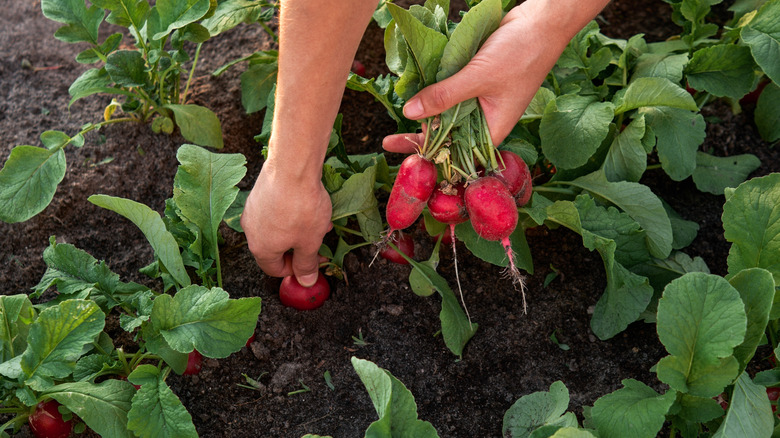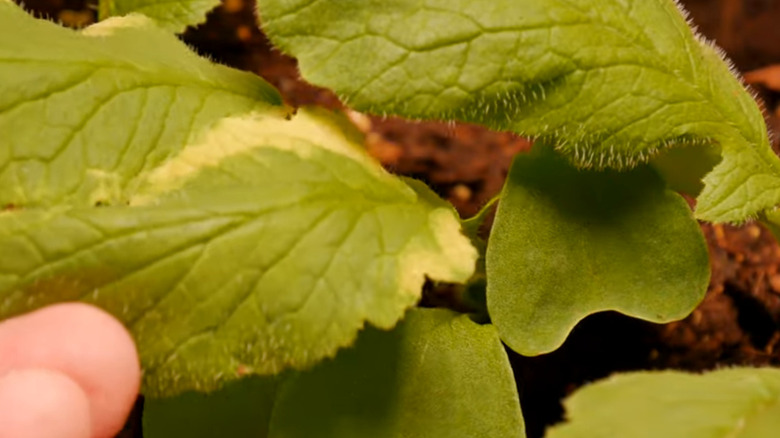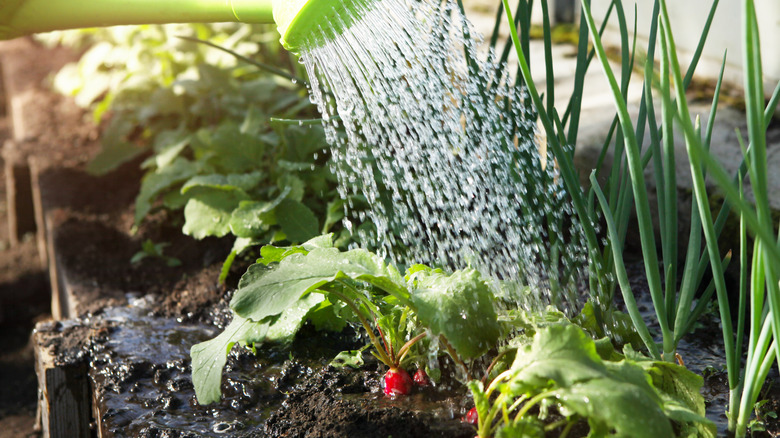Why Your Radish Leaves Are Turning Yellow (And What To Do About It)
Featuring among the fastest-growing vegetables, radishes (Raphanus sativus) hold a special allure for gardening enthusiasts seeking quick turnarounds for their efforts. Factor in their delightful peppery flavor and excellent companionship capabilities, and you know why every avid home gardener has tried growing radish plants. However, gardeners often struggle with their radish leaves turning yellow despite their ease of growth. While the yellowing of new leaves isn't concerning, as they will grow out, you must take action when the matured ones begin turning pale.
The appearance of yellowing radish leaves is often attributed to environmental stressors like poor watering practices, inadequate sunlight, and nutritional deficiencies. Overcrowding and weed competition can further exacerbate the issue. But providing the radish plant with its ideal growth conditions can restore the damaged leaves to their lush green foliage. Moreover, fungal diseases and pest infestations, such as club root disease and cabbage maggots, can also cause yellow leaves, necessitating specialized care.
Reasons for radish leaves turning yellow
Inadequate watering practices can cause your radish leaves to take on a yellow hue. Water too much, and the radish plant can no longer access sufficient oxygen, causing it to grow yellow leaves and develop root rot. Being planted in poorly-drained soils can accentuate this problem further. Alternatively, underwatering can restrict the plant's nutrient intake, inhibiting growth and producing dry, discolored foliage. Fewer than six hours of sunlight exposure can also pale your radish leaves color.
Further, fungal diseases, namely septoria leaf spot, clubroot, black rot, and powdery mildew, are a common nuisance for all radish planters. While they all cause the leaves to change their hue, additional telltale signs may vary. For instance, clubroot infects the radish roots and leaves present in wet, acidic soils and turns the leaves yellow, causing them to droop during the day and recoup at night. Similarly, black rot causes V-shaped yellow marks on the leaf margins, eventually turning them brown.
Additionally, pest attacks from leafhoppers, harlequin bugs, and cabbage maggots (most active during May and June) can result in wilted, pale leaves. Besides, radish plants don't fare well when faced with extreme competition for nutrients from their fellow counterparts and weeds, forcing the leaves to discolor. Rarely, nitrogen deficiencies can also lead to wilted greens.
Dealing with yellowing radish leaves
Usually, improving the plant's growth environment can help address a yellowing condition. While watering requirements vary across soil types — sandy soil needs more, for example — adopting best practices like mulching and drip irrigation will keep your soil sufficiently moist. Further amending the soil with perlite and compost of shredded leaves will also improve drainage. As for dealing with inadequate sun exposure, you might want to consider repositioning your plant.
However, dealing with fungal and pest infections can be difficult. As a precautionary measure, you must remove all infected leaves to prevent transmission and then treat the zone with fungicides and insecticides. Complement it with frequent crop rotation, preferably with non-brassica varieties like lettuce, to prevent fungal attacks in the future.
But if your plant suffers from nutrient deficiencies due to over-competition, regularly pulling out weeds and spacing out your radishes should help. Spring radishes should be thinned out ½ to 1 inch apart, with winter varieties planted at a 2 to 4-inch difference. Using a nitrogen-rich fertilizer should take care of occasional soil deficiencies, restoring your radish to its former glory.


